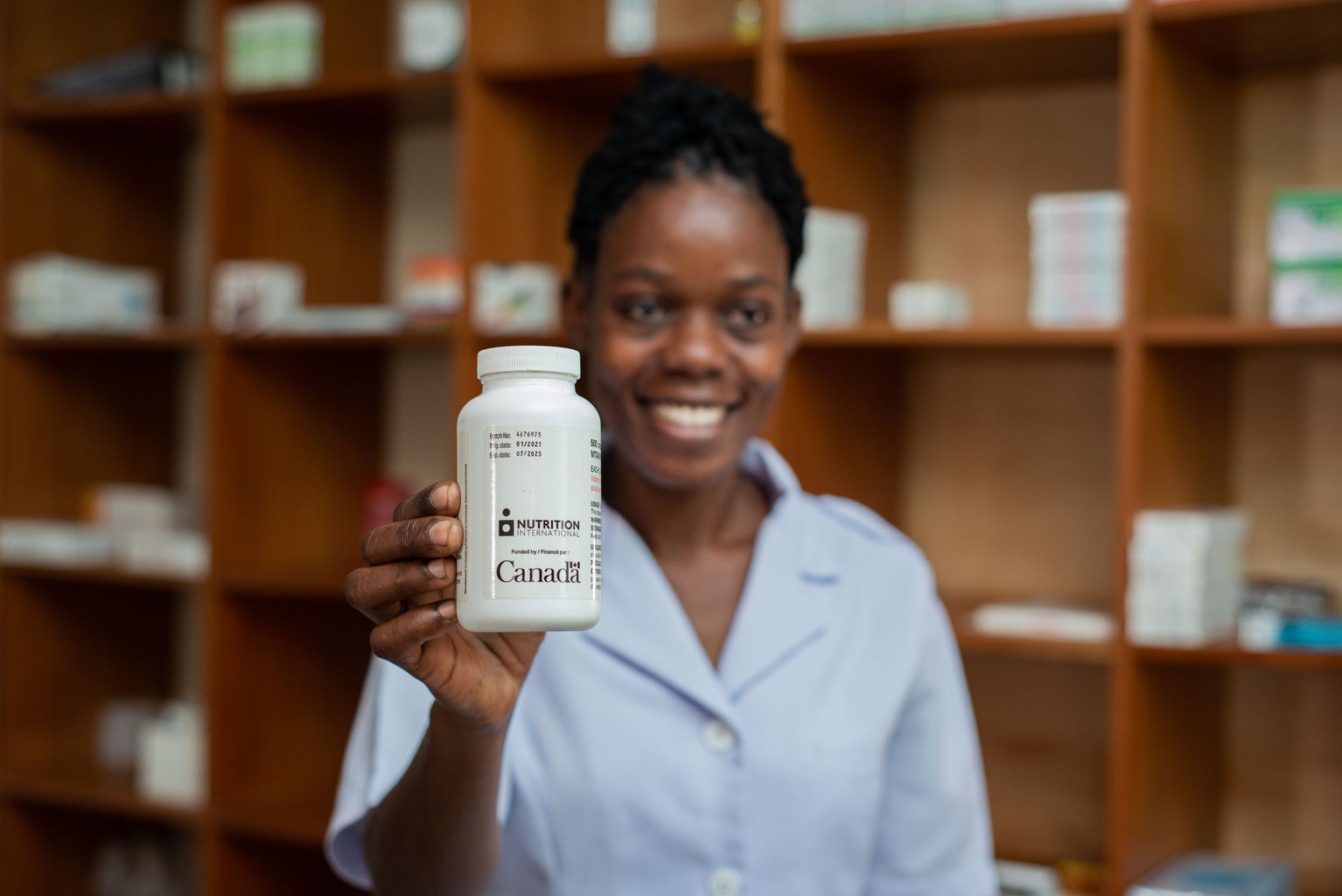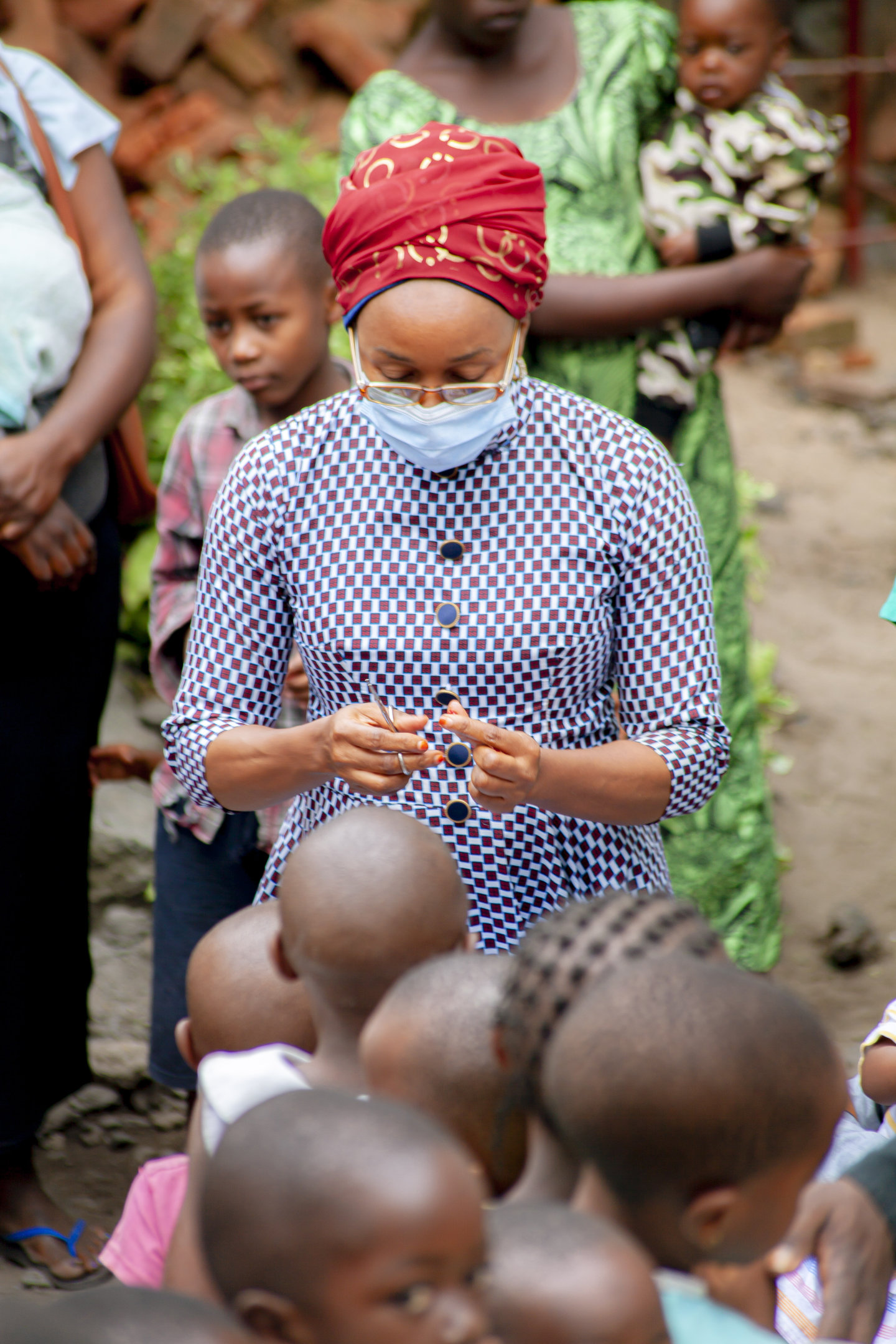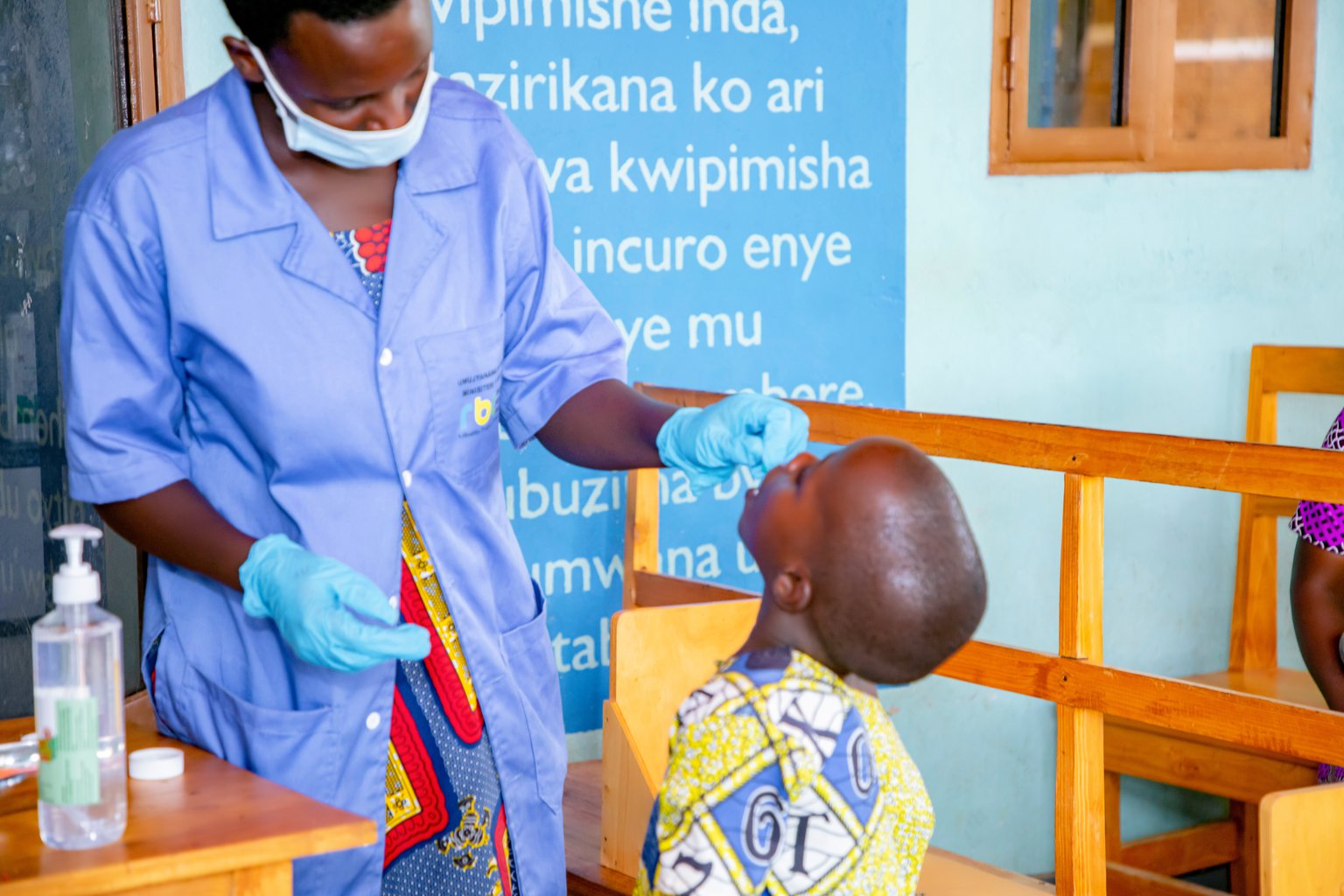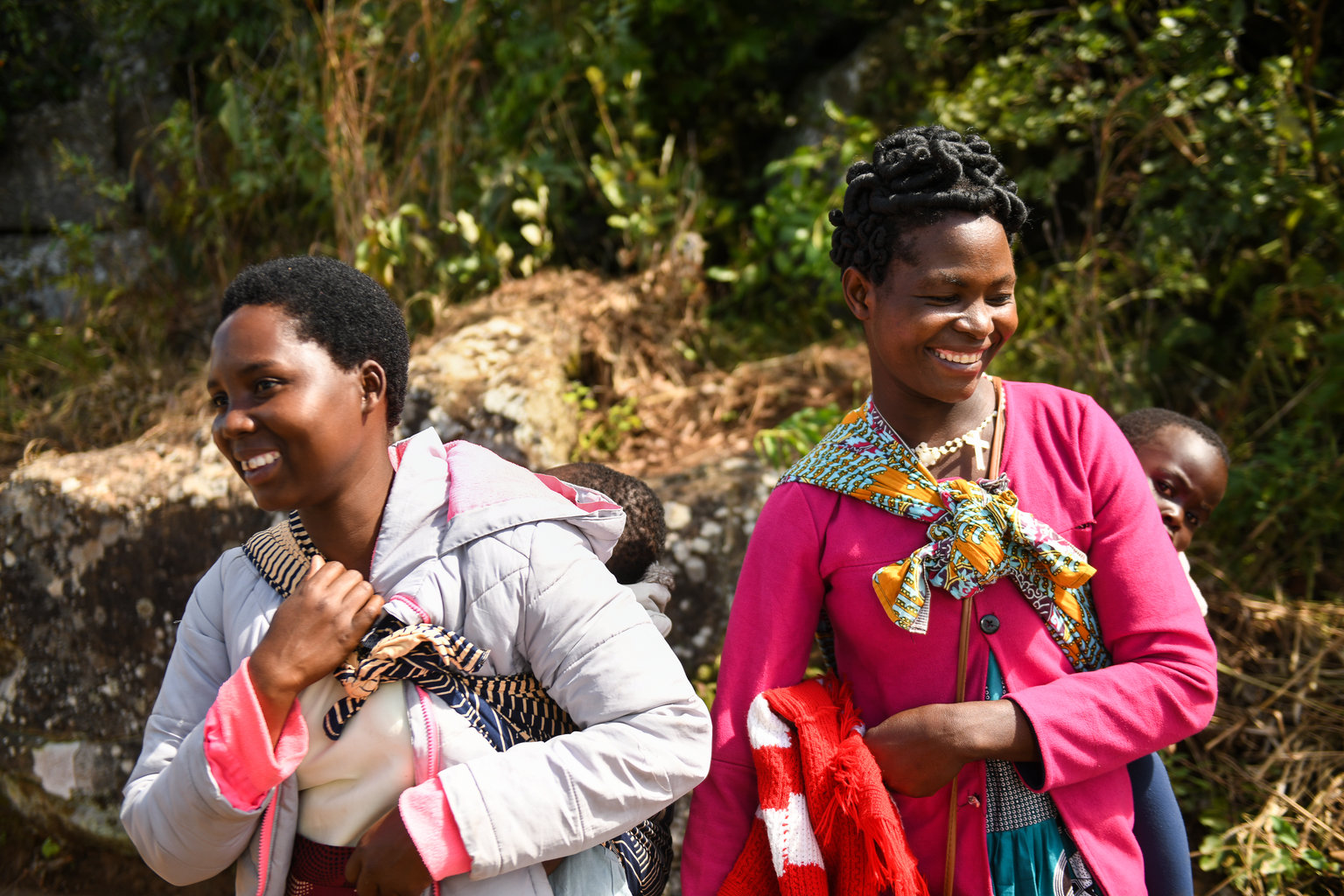News
Canada and Nutrition International reaffirm commitment to child survival in Tanzania through vitamin A supplementation
July 21, 2025
WP_Term Object
(
[term_id] => 49
[name] => Field Stories
[slug] => all-field-stories
[term_group] => 0
[term_taxonomy_id] => 49
[taxonomy] => news-category
[description] => Discover the personal stories of people whose lives have been impacted by better nutrition, and those working tirelessly to deliver it.
[parent] => 0
[count] => 181
[filter] => raw
)
Q&A with vitamin A supplementation champions
We speak with two of Nutrition International’s leading experts on vitamin A supplementation to gain insight into the life-changing difference of this low-cost, high-impact nutrition intervention.
Posted on May 3, 2023
Over ten billion vitamin A capsules donated, partnerships with governments around the world, global technical assistance and guidance – vitamin A supplementation (VAS) is a program at the heart of Nutrition International’s work.
Banda Ndiaye and Alison Greig are two of the individuals who bring this program to life to ensure children under five receive this necessary micronutrient to survive and thrive. Banda is Nutrition International’s Deputy Regional Director for Africa. Alison is the Senior Director of Nutrition International’s Global Technical Services and Practice Area Lead for Child Survival. She is also the chair of the Global Alliance for Vitamin A (GAVA).
In this Q&A, Banda and Alison highlight why VAS needs to remain at the forefront of global nutrition priorities, what the COVID-19 pandemic revealed, and the potential of quality VAS programming to be a gateway for other essential nutrition interventions.

How would you describe the importance of VAS and why is it still needed as an essential public health intervention?
Alison: VAS is an essential public health intervention to protect children who are at risk of vitamin A deficiency from unnecessary illness, and from preventable death. Vitamin A deficiency (VAD) is a common problem across low- and middle-income countries, especially in children under five, mostly due to insufficient vitamin A in the diet because vitamin A rich foods can be hard to come by. Low intake of vitamin A is the main cause of VAD, and when children are vitamin A deficient, they’re less able to fight off illness and infection. Further, when a child is ill, the body uses and excretes more vitamin A and so their VAD becomes more exacerbated. It’s a vicious cycle, and one that’s hard to break.
There is strong evidence to show that in populations where children are vitamin A deficient, VAS using high dose capsules twice a year can protect them from the effects of VAD. This is shown to have a 12% child mortality reduction in these populations, but it also reduces incidences of diarrhoea and measles, which are two things that can make children at high risk for malnutrition, and even death.
How would you describe Nutrition International’s approach to VAS?
Banda: Ensuring government ownership and joint accountability is integral to our approach. This is not just between a government and Nutrition International, but it’s building strong relationships between government, Nutrition International and other partners and communities.
I think another key aspect of Nutrition International’s approach is the capsule donation program so the availability of capsules is not a constraint to achieving coverage. We want to ensure that vitamin A capsules will always be available to countries where needed and that lack of availability would not be a contributing factor preventing children from getting this highly effective child survival service.
Alison: Nutrition International’s approach to VAS programming is very much within the context of each country. We first look at what the situation for children between six to 59 months is in the country. What is happening? Are they currently being reached with VAS? Are they being reached with other services? If not, why not? Although we’re supporting VAS programs, we take a health systems approach to support governments to reach children under five not only with VAS, but with all of the essential nutrition and health services that they need. And so, we focus on a fully protected child approach and that’s immunizations and the essential nutrition actions together – protecting the child so they reach their fifth birthday.
Nutrition International has worked to support VAS programs since 1994. We’ve seen a lot of change in that time and the program has been tested in different ways. Then came the COVID-19 pandemic. Is there a key learning that stood out to you that the pandemic either revealed or brought to light when it comes to VAS?
Banda: Definitely. There’s a lot we learned from the pandemic: first of all, the vulnerability of the health system, especially in sub-Saharan Africa. Due to COVID-19, a lot of key essential child health and nutrition services, including VAS, became less accessible to the children who needed them. In areas where vitamin A coverage was already declining, the pandemic exacerbated this decline due to very low levels of preparedness of the health systems to respond efficiently to the disruption caused by the pandemic. Therefore, we realized that strengthening community-based health systems could be a great opportunity to increase the capacity of health systems overall. We also learned how important it is for partners and donors to be flexible, so they can adjust their funding or their program in response to such kinds of disruption. This ensures that available funds can be used in the most effective ways to contribute to strengthening the capacity of health systems to respond to these types of shocks.
How did Nutrition International respond to this?
Alison: This was a situation that Nutrition International was extremely concerned about. Children going too long without their age-appropriate dose meant that they became even more vulnerable to the implications of their vitamin A deficiency, which is increased illness and early death.
Our response was twofold. We worked closely with our partners at GAVA to rally together and use the best evidence available to provide guidance to countries around how to safely continue to administer VAS. Working together with the Centre for Disease Control and Prevention and the World Health Organization we worked out the protocols to administer VAS in the context of the pandemic and were able to provide clear operational guidance around the use of personal protective equipment and how to safely organize campaigns, respecting all the social distancing and other transmission-reduction recommendations. We produced job aids for health workers in three languages, which were widely used and shared with WhatsApp. Some countries translated and adapted these to their local context, like in our core countries of Bangladesh and India.

At the same time, we appealed to Canada to increase its financial support to Nutrition International during the pandemic. They supported us to bring a “catch-up” approach to countries so when it was deemed to be safe, we were in the position to double down in our core countries as well as extend support to 17 additional countries in Africa where Nutrition International doesn’t have offices but were in critical need. This catch-up effort was able to urgently provide resources to do high coverage events and intensify efforts to reach children who, at this point, would have gone six, seven, eight, nine or even 10 months without their dose.
Kenya is a very interesting example. It was one of the few countries that saw VAS coverage increase during 2020. What happened there that made this possible?
Alison: Kenya is a country where, before COVID-19, Nutrition International had worked very closely with the Ministry of Health to conduct implementation research and operationalize how to best optimize VAS delivery across the five different delivery platforms suggested in their VAS strategy. These include fixed site, routine outreach, Malezi Bora (biannual social mobilization campaigns), early childhood development centers, and community health volunteer home visits. The operational guidelines informed by this work and recommended by Nutrition International were scaled up across the country.
This, coupled with the recent policy change that permitted community health volunteers to actually carry vitamin A supplements and administer them to children at home or in the community, is the key to Kenya’s success during COVID-19. The community platform, one of the five delivery platforms mentioned above, was beginning to scale up and take off before the pandemic. What ended up happening was a bit of a happy experiment. As COVID-19 caused fixed-site health facilities to shut their doors or turn people away, or people were hesitant to seek out services, community health platforms continued to deliver. This resulted in much less disruption of VAS coverage in Kenya than in other countries.
What it really illustrated was that the key to this kind of resilience is not having just one place where services are delivered.
Banda: In Kenya, we systematically used a health system strengthening approach. This meant strong governance and leadership at the highest decision level, as well as really improving upon existing methods for micro-planning and use of data to identify the potential platforms that can give more opportunity to reach children, especially older children who complete their immunizations and are not brought to health facilities on a regular basis. That was in play in addition to the community-based health system.

We talk a lot about being an ally to governments. What does our work with governments actually look like?
Banda: We always engage them at the beginning, and make sure that their commitment is formally expressed, and at the highest level possible. Then throughout the process, at each step, we make sure that we work closely, hand in hand, with them. For example, in our core countries we have a senior program officer fully involved and engaged in and providing guidance to government technical working groups. In non-core countries, we make sure that we have a country focal point who is sometimes embedded into the Ministry of Health. Regardless, they’re working with the ministry counterpart to provide technical support and guidance throughout the process of implementing the program.
Alison: We support governments and their health system staff to deliver the programs that they are already delivering. Nutrition International doesn’t set up a parallel distribution system. Instead, we support the government to deliver the program to their population.
How does our work with governments contribute to building resiliency within a healthcare system?
Alison: We use the term resilience a lot because we’re in this kind of post-pandemic reflective period. But really health systems strengthening has always been about resilience and the capacity building of all elements of the health system. This means all of the pillars and the structure of the health system is able to continue to improve upon delivering services to populations for both health and nutrition. The stronger and more capable a health system becomes, the more resilient and less vulnerable it is to shocks, whether they are economic, public health related or other things.

You each have a breadth and depth of personal experience working within VAS. When you look forward, what are your hopes for the future for VAS?
Alison: The future that we’re all working towards is one where all children in countries where VAD is a public health problem have access to, and are receiving, the vitamin A supplement that they need, at the right time, to keep them fully protected. That’s the ultimate goal. At the same time, we also want to see vitamin A deficiency going down in countries, improved public health approaches for infection control, and improved access to quality foods for children as well as adults. We want to get to a point where VAS is no longer needed as such an essential, life-saving intervention.
Banda: We want VAS to be seen by governments, by partners and by donors as an entry point for improving the access and uptake of key essential nutrition services ― not just VAS. Donors who may be interested in other essential child health and nutrition services should perceive VAS as a valuable investment for improving the capacity of the health system to sustainably deliver other essential child health and nutrition services.
For example, in sub-Saharan African countries it’s very rare to get coverage of essential nutrition services because the services are offered on a very small scale and inconsistently. We want to use VAS to increase the availability and uptake of essential child nutrition services like growth monitoring promotion along with nutrition education and screening for treatment of acute malnutrition. In this way, we will not just see an increase in two-dose VAS coverage; but we will also see an increase in the proportion of malnourished children detected and referred for treatment, increased provision of nutrition education, and improved child feeding practices, which will, as Alison said, also contribute to reduce VAD. We want to see more fully protected children.